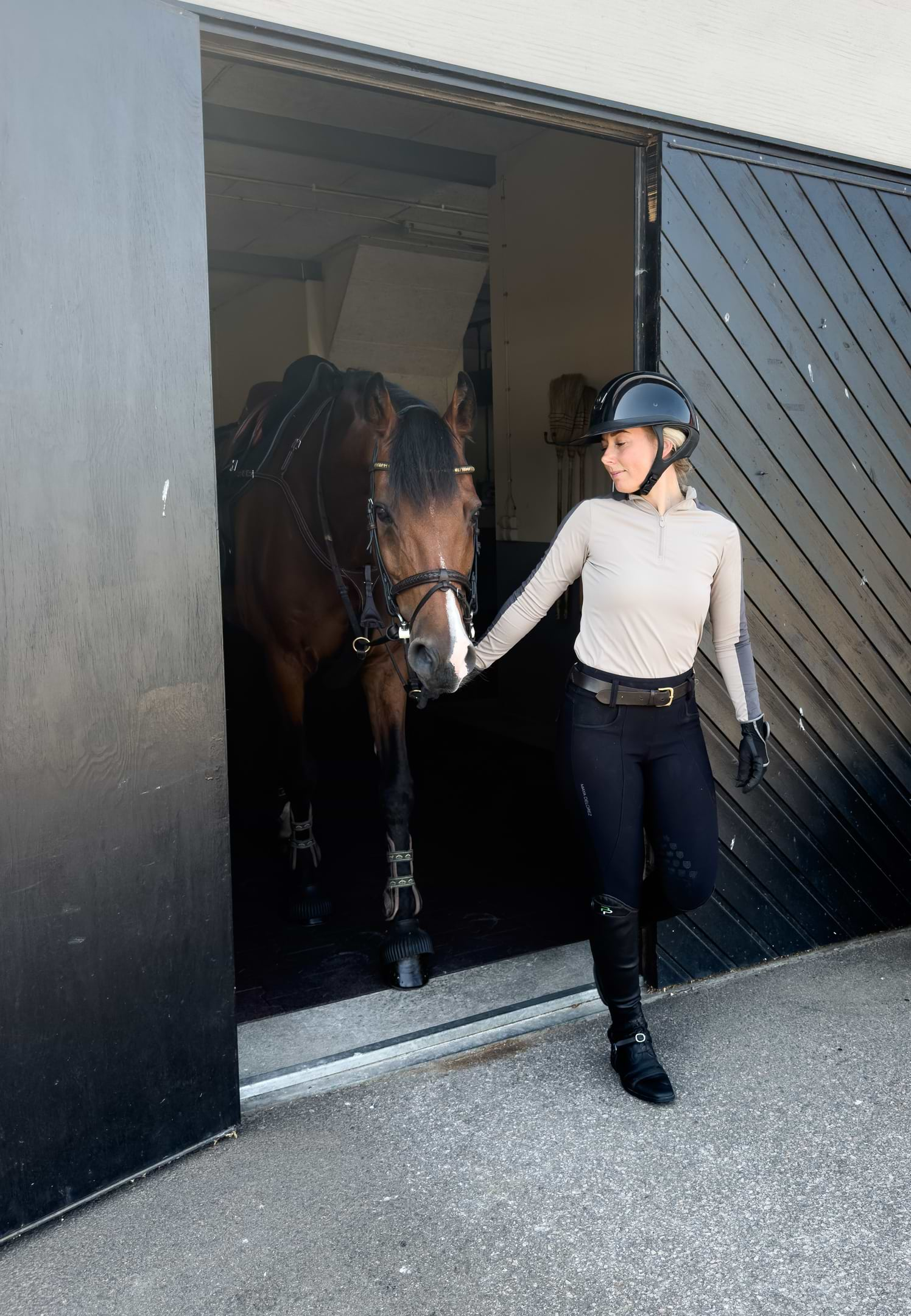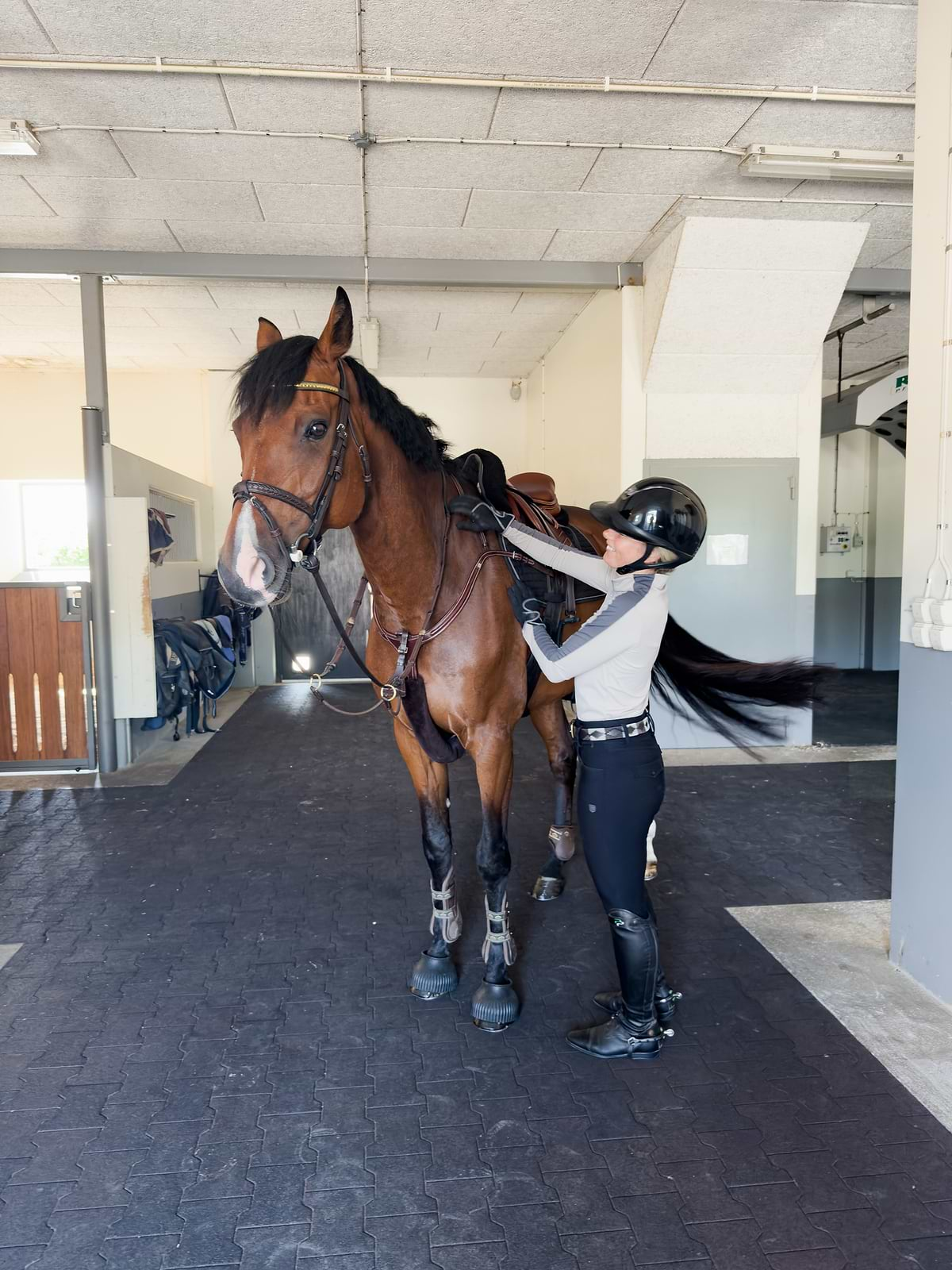Johanna Lassnack's Best Tips:
Mental Training for Riders
Mental coach Johanna Lassnack shares her best tips for mental training in equestrian sport. Read all about her valuable insights here.
Amanda
Tue 10 May - 22

Johanna Lassnack's Best Tips:
Mental Training for Riders
Mental coach Johanna Lassnack shares her best tips for mental training in equestrian sport. Read all about her valuable insights here.
Amanda
Tue 10 May - 22
Johanna Lassnack is a Swedish lecturer, entrepreneur, rider, and appreciated coach for young athletes. She is also the author of the Swedish book ‘A mental spur: Take your riding to the next level’ where she wants to help riders who are struggling with insecurities to feel safer on horseback.
We asked Johanna for some of her best tips regarding mental training for riders and concrete tools to help reduce feelings of fear and nervousness. Enjoy!
Preparation is key
“Prepare as much as you can, it will give you peace of mind. Make sure you are ready for the level you are going to compete at and that you and your horse feel safe with the tasks. If you do not, I recommend you stay on a level where you feel comfortable a bit longer before proceeding to a more difficult level.
Be on time and prepare a careful schedule. Avoid unnecessary pressure and stress. Make sure to eat and sleep enough the night before and check your packing list to ensure that you have not forgotten anything.”
Start visualizing
“One of the strongest and most powerful tools for succeeding with an achievement is visualization. It is actually something that a lot of elite athletes do. The brain does what we ask it to do. Therefore, it’s important to avoid the word ‘not’ when you make your plan. It’s a common mistake to think ‘I should NOT ride with stiff hands this round’ or ‘I am NOT going for five strides on that distance’. If you talk to your brain in a negative way, the result will most likely be negative as well. Simple as that!
When visualizing your performance, it’s necessary to get the right feeling. Take a few minutes and go through the ride with the feeling of how you sit on your horse, how your horse moves under you, and how you ride relaxed and focused. If you’ve already felt what you want to feel when you perform, your brain will recognize the situation once you get on track.
Fill your brain with positive thoughts and feelings before your round. This will make it easier to prevent any negative thoughts. Replace all thoughts of what NOT to do – with thoughts of what to do.
Change from thinking ‘I should NOT ride with stiff hands’ to ‘I am going to ride with relaxed and soft hands’ instead.”
“See failures as horse jumping obstacles. We should jump over – and overcome – them, not avoid them.”
– Johanna Lassnack
Stay focused
“A lot can happen when you warm up. Someone might be standing in your way, shouting from the stands or disturbing you in other ways. It’s easy to get distracted. Do you have a plan for what to do when you lose focus?
The most important thing is to define exactly when you are losing focus – and why. Once you have defined when your focus disappears, you can quickly take it back. But it only works if you have a plan for how to deal with it.
For example, if you lost your focus to someone sitting in the stands, you can take it back by thinking of a task linked to your performance, for example: ‘Now I will practice collected canter’.”
See failure as an opportunity to learn
“When things do not go as planned, it is important to learn to handle it as a lesson. Of course, it’s okay to feel disappointed. But mental strength means you can see failures as lessons.
Failure tells us that we lack some form of knowledge. It’s important to be able to analyze what went wrong and practice that. If your horse refuses a vertical out of turn – you need to practice jumping verticals out of different turns. It’s all about preparing, training on your weaknesses and coming back stronger. See failures as horse jumping obstacles. We should jump over – and overcome – them, not avoid them.”
